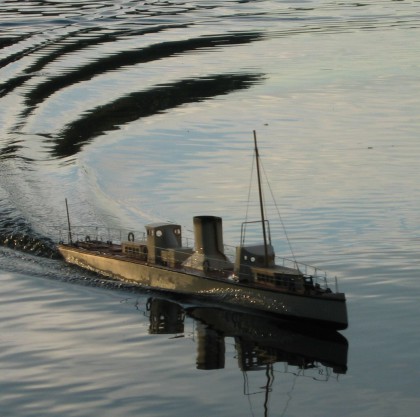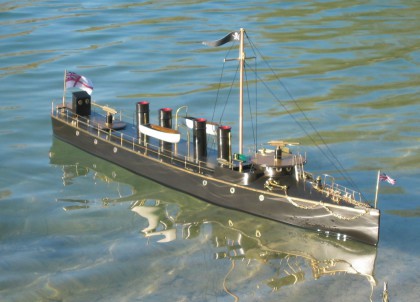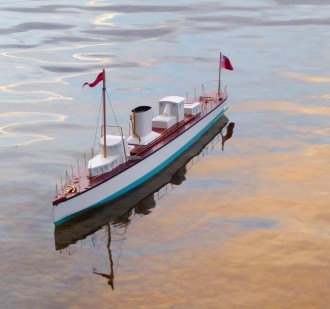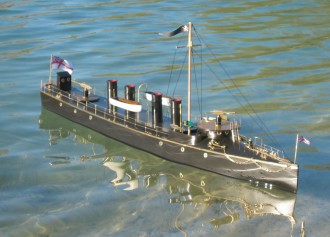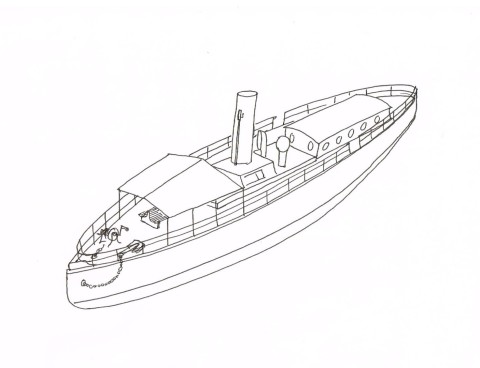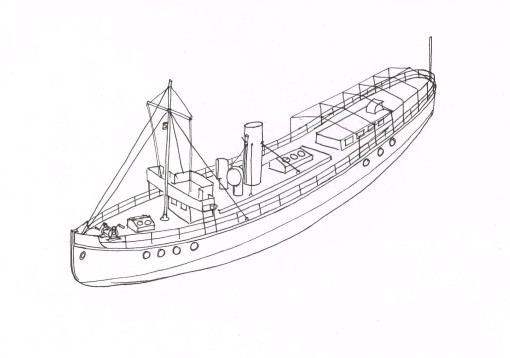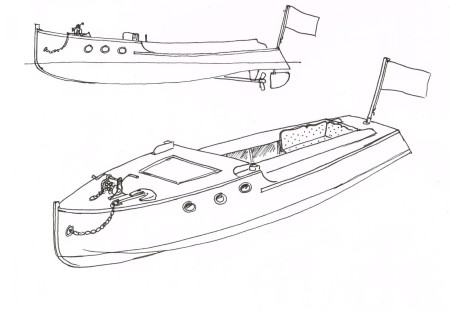Victorian Speedboat
This series is designed to capture the charms, overdrawn lines and deliberate simplification of vintage toy models. The models can be equipped with electric motors and radio control equipment to spend quality time at the lake.
The hull is based on the plan I drew for my private Turbinia in 2006, displaying the lean lines typical for fast watercraft of the era. Despite their old-school appearance, these models can be sailed quite swiftly, to everyone’s surprise.
Hidden inside is an electric motor of more or less modern construction that acts upon a brass propeller via a high-quality prop-shaft. Shaft and motor are connected by a flange that aligns them perfectly to keep noisy vibrations at bay. The motor mounts are standard to allow for a wide variety of motor options. Twin engines and shafts are a further possibility. The torques of counter-rotating props cancel each other out and thus improve the handling, besides, they make for an awesome sight. (better picture with everything installed will follow)
Examples:
Experimental Run #1
HMS Pike
Naming torpedo-boats after vicious things like medieval staff weapons or ferocious predatory fish seems an appropriate tradition. Naming them after gorgeous English actresses not so much, but anyway.
Here is another variation of the Victorian era speed-boat. The self-propelled torpedo, invented in 1868, proved a formidable weapon which could be launched from a rather small craft. The proud, heavy battleships with their big guns found themselves surprisingly helpless confronted with a nimble, fast-moving adversary. So the navies devised a new type of ship to take on this menace. It was light and fast, very much like a torpedo-boat itself, but armed with small, quick-firing cannons, and they called it “torpedo-boat-destroyer”. After some later development, they figured out that small, fast warships could really destroy a lot more than just torpedo-boats, so nowadays they are referred to simply as “destroyers”.
These craft were pretty cramped, more like floating engine-rooms with some spartan creature-comforts wedged in between machinery. Since there was no room for complicated smoke-ducts, and every boiler has its own funnel, the tiny HMS Pike rivals the most powerful ocean-liners when it comes to the sheer number of stacks. The overall black colour scheme serves as camouflage for nightly operations, besides, the excessive amount of soot coughed out by furnaces would soon render the boat black anyway.
Length: 92,0cm
Beam: 14,8cm
Displacement: 1,77kg
Engine: electric Power 600, 2S LiPo battery
Designs and Ideas
Here are some ideas what else can be made on the hull of the victorian launch. Interested? Then the first prototype could be yours.
